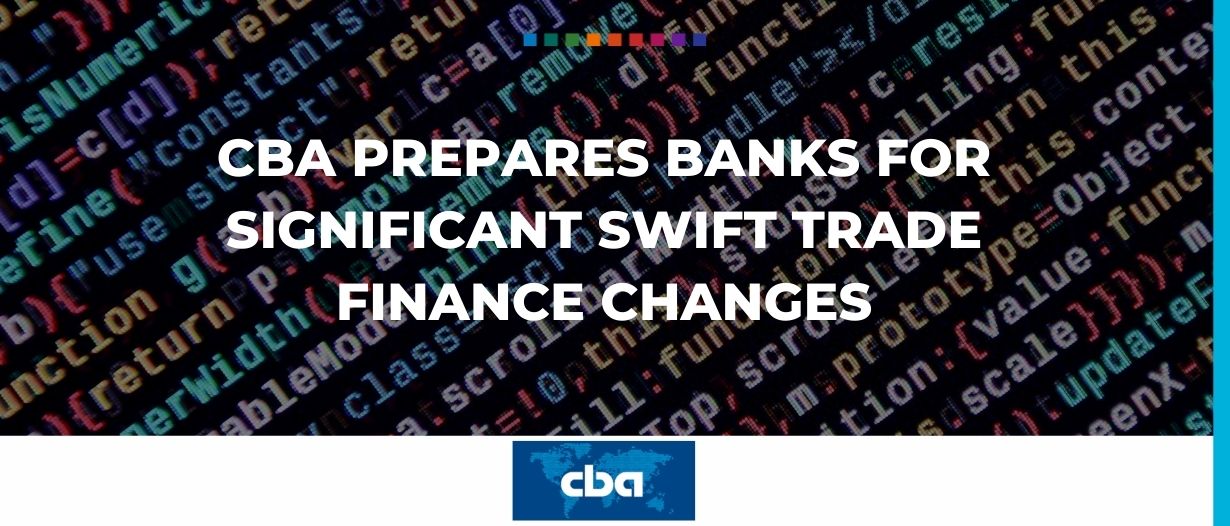Commercial Banking Applications (CBA) to help banks prepare for new structured message formats for exchanging information around Guarantees and Standby Letters of Credit which are crucial for the digitalisation of trade finance.
Oslo, Norway – 14th July, 2021 -Norwegian software vendor Commercial Banking Applications (CBA), announced that it has sent the latest annual release of its IBAS GBF – Global Banking Factory software to all customers over three months ahead of schedule, allowing additional time for testing in advance of the upcoming cutover to SWIFT Release 2021 in November this year.
The SWIFT changes are part of an industry-wide initiative to support the digitalisation of trade finance – moving away from unstructured messages to more complex and structured message types that allow for increased automation and straight-through processing. SWIFT Release 2021 upgrades the functionality and format of messages for Guarantees and Standby Letters of Credit, building on the updates to Documentary Credit messages completed as part of SWIFT Release 2018.
To prepare for the November 2021 switchover, banks need to ensure all back-office applications, front-end systems, APIs and other interfaces are ready for the transition. By involving all user banks in workshops early on in the process and allowing them to test a pre-release version – CBA is allowing them ample time to interface with other systems, optimise the customer front end and establish new operational routines to ensure a smooth changeover.
To simplify the process for corporates the changes to CBA’s IBAS GBF front-end solution have been made based on a flexible user interface which is user-friendly for corporates not familiar with SWIFT’s complex message structure and crucially still in compliance with the new SWIFT standards. Capturing all data in a structured format reduces errors and will allow banks to increase automation, improve straight-through processing and accelerate turnaround times for trade finance documentation.

“Whilst the removal of Standby LCs from key Documentary Credit SWIFT messages might appear like a small change, the consequences for banks and their downstream operations is significant. This has made it essential for banks and vendors to start preparations in good time,” explained Rolf Hauge, CEO and founder of CBA.
“We have optimised the business logic associated with handling the new requirements for Standby LCs, which must now always be issued using the same message type as Guarantees, to make the process as straightforward as possible for user banks. This includes the roll-out of brand-new applications for handling Standby LCs which are not only SWIFT compliant but also tailor-made in line with Standby LC market practice.”
“The early release of our software is enabling our user banks to update and test all processes thoroughly, including customer front-end systems, APIs towards other systems and message flows to both corporates and banks,” added Hauge. “Preparing early also allows banks to think ahead about how they can leverage the improved data quality and efficiencies that the new structured message formats will bring. For example, there’s scope for banks to use AI and machine learning to improve and automate risk management, reporting, KYC and AML processes.”
The overhaul of SWIFT’s category 7 message types, including Documentary Credits, Guarantees and Standby LCs, was first set out in 2013. The updates take into account change requests from previous years, including the need to increase straight-through processing, fill gaps in transaction flows and also incorporate requests from the trade finance community that have arisen over the last ten years. Updates for Documentary Credits went live in November 2018, and the upcoming release handles all updates for Guarantees and Standby LCs. Initially, the 2021 release was planned for 2019. It was deferred to 2020 to allow banks more time to prepare and subsequently deferred to 2021 because of COVID-19.





























